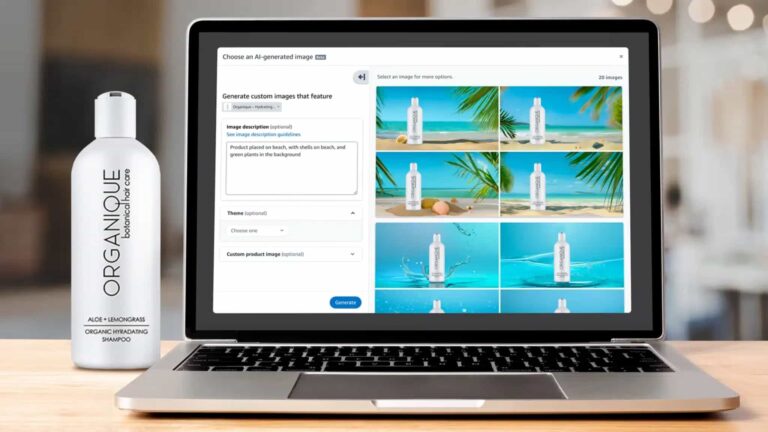
Generative AI continues to find new areas of applicability as early-stage experimentation is underway. For example, in areas like brand marketing, AI integrations so far include writing copy for websites or product listings. These address real business pain points.
Search is another area that continues to see AI infusions. For example, Google continues to integrate AI on the front end, and in merchant-facing ways (SEO tasks like writing page meta descriptions). And as we examined recently, AI has a growing role in Google Maps.
But eCommerce is perhaps the most fitting venue for AI, given its scale and high stakes. This joins AR’s role in the field of eCommerce over the past decade, including dimensional product try-ons. Can the two technologies together carry a meaningful one-two punch?
On the AI side, we’re only starting to see the first steps. The latest integrations come from Amazon and Google. Within a week of each other, they launched AI features that automate and augment the production of professional product images for eCommerce pages and listings.
Popular Flavors
Taking those one at a time, Amazon was first out of the gate with its AI image generation tool. This helps non-media savvy sellers generate professional-looking images for their product pages or ads. Specifically, the primary function is generating contextually relevant backgrounds.
This works similarly to popular flavors of generative AI in that merchants can enter keyword prompts to produce images. They first upload product photos, then type image descriptions or themes (think: beach, kitchen, autumn, sunset, etc.). It then spits out snazzy backgrounds.
Merchants can play with this functionality until they get the image they want – a process that will naturally condition their skills as prompt engineers. But it’s meant for any skill level, and will apply to small and large eCommerce sellers that can benefit from time and cost savings.
Moreover, this addresses a broader area that’s primed for AI: brand marketing. Early in the generative AI cycle, this was the area we pointed to as the most prone to AI disruption, along with stock photography. Generating images on the fly scratches an itch for brand marketers.
Craveability & Conversions.
Moving on to Google’s latest integration, it similarly generates custom images for product pages, such as Google Shopping. Known as AI-Powered Product Studio, it features text-to-image AI that’s driven by prompts. And like Amazon’s play, its primary purpose is image backgrounds.
The use-case example that Google spotlights is a beauty brand that can position skincare products surrounded by seasonal imagery or ingredient-evoking fare like peaches and tropical plants. It’s all about boosting the “craveablity” of a given product and, ultimately, conversions.
In addition to adding backgrounds, Product Studio can do things like remove distracting backgrounds and replace them with simple color gradients or other modern looks. It can also improve and upscale low-quality images, which could save brands money by avoiding reshoots.
Speaking of avoiding reshoots, one value proposition behind Product Studio (and Amazon’s corresponding play) is to engender more variety from a single product photo. That includes seasonal variations or more specific thematic elements like holidays or moods.
Is AR Shopping Cheaper to Produce Than Traditional eCommerce?
Convergence of Acronyms
So there you have it, two announcements in as many weeks that could signal an important trend at the crossroads of AI and eCommerce. And as noted, all the above is adjacent to AR and its various flavors, such as 3D product try-ons and image augmentation generally.
Similarly, back to “craveability,” it’s long been a goal and outcome of AR-based brand marketing. As we’ve examined around categories like food, animating products in 3D can boost conversions by giving users enhanced and immersive perspective, and the results speak.
Similar to AR performance we see in case studies, Amazon says that it expects conversions to grow as much as 40 percent from the above AI-driven image enhancements. These numbers will eventually be proven on a larger scale from Amazon, Google, and others that follow suit.
Altogether, we’ll continue to see this convergence of AR, AI, and other acronyms as they develop in parallel. And to come full circle, the applicability will continue to broaden, including everything from brand marketing to entertainment to functions that haven’t been conceived yet.

